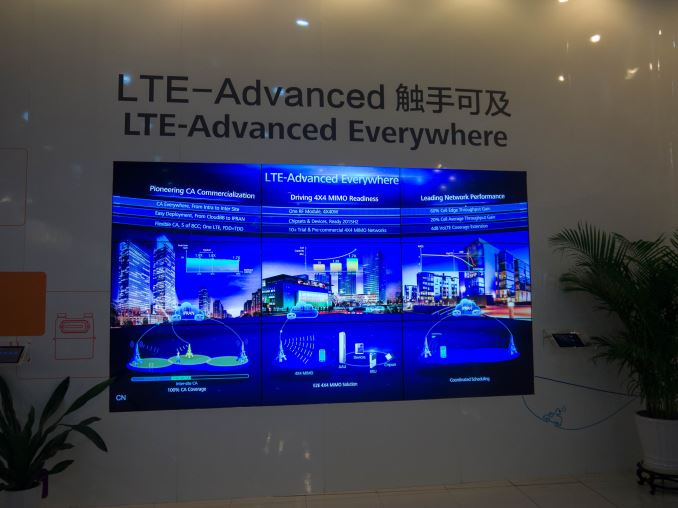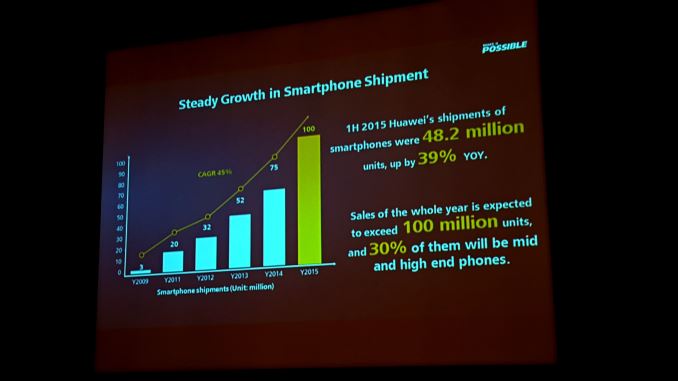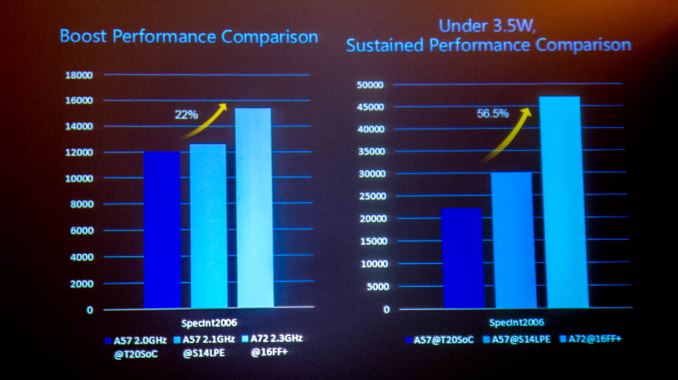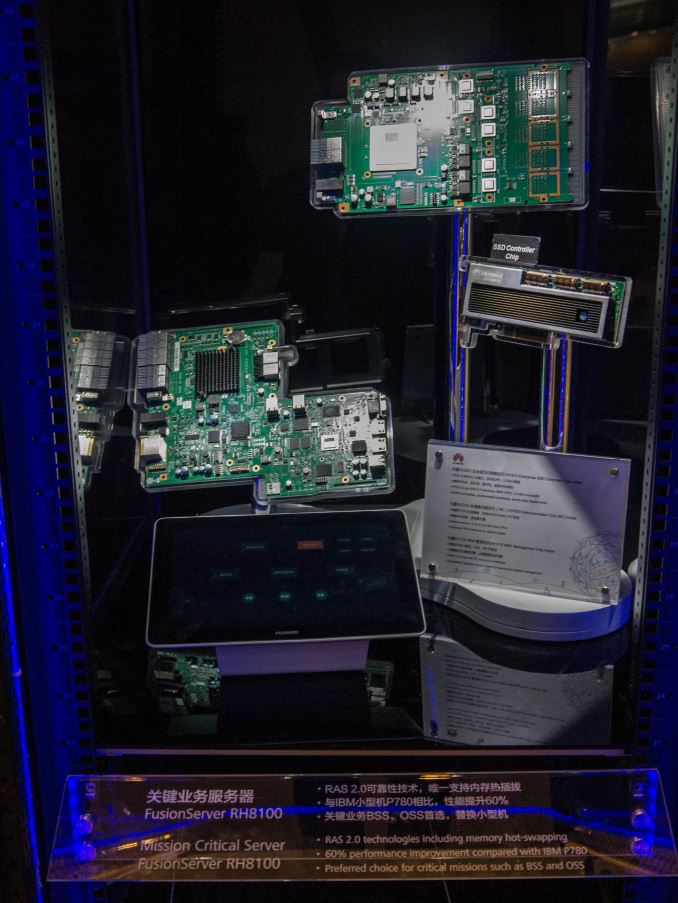China Calling: Huawei’s Media Tour, Kirin 950 and Why We Went
by Ian Cutress on December 4, 2015 8:00 AM ESTFinal Thoughts
All truth be told, when an electronics manufacturer opens up we stand to gain a great deal of insight into how they think and how strategies formulate. Sure, it’s a question of speaking directly to the people that actually make the decisions, otherwise questions and answers never go through the chain. But also as an editor, from my perspective, it is important to understand when you are presented with a standard PR answer and ask the right questions sufficiently in order to get to the heart of what makes a company tick. There will always be things that a company will never tell you, either due to liability or the level of trust they have with you, or there might be some discussions that remain strictly behind closed doors.
As we tell every company we meet, those closed room discussions, despite not directly producing content for us as technical media or analysts, are just as valuable as on-record meetings and can actually be really helpful in understanding perspective or technical details. Even if we do not write about what is said, it enables another layer of conscious or sub-conscious consideration and analysis about the industry for when we write about other topics, helping us translate what we see into the wider picture. Understanding why from a bottom-up perspective is just as important as the top-down, even more-so when looking at trends and directions and being able to educate users and engineers alike.
In that regard, this trip has established a new level of dialogue between Huawei and AnandTech in order for both sides to understand each other more, from our understanding of the markets and devices to their diverse silicon and product portfolio. That rapport and direct line of communication to those who turn the cogs which we did not have before is important, with respect to handsets, silicon, and wider corporate strategy. It is clear that Huawei wants to expand into more markets beyond their standard Chinese base, and has dipped its toe into leading the market with TSMC’s 16nm FinFET+ node in the Kirin 950. The phrase ‘premium brand’ was a common theme throughout our trip, and the numbers back that up. Moving from 3 million handsets in 2009 to 48.6 million in the first six months of 2015 alone means that the investors are all happy, especially given that 30% of those are high-to-mid level devices at a cost of €400 and up. Being partially vertically integrated through its HiSilicon subsidiary allows it to reduce cost, spend on R&D and provide a custom product as long as it is well executed. While this is going on, Huawei’s two other business groups on services and infrastructure account for the other 60% of the company, which are also both benefiting from the HiSilicon synergy.
Huawei does still have several mountains to climb however, this much is obvious. When speaking purely about the handset business, when striving for that premium brand status, its presence in North America is still a way behind the two major players. This stems from several factors including a CDMA licensing and certification issue preventing Kirin chipsets in North American models, but also an issue regarding the perception of some users that will not want to hand over money for a device made by a Chinese-based data company, especially if they cannot pronounce the name. Arguably the first of those issues is easier to crack about CDMA, such that one solution to Kirin might be to produce a die without an integrated modem, similar to Apple, but both of the issues above will have severe implications on Huawei’s ability to expand in the US. The Huawei watch too, as a dip into the wearable space, comes with many variables on style, size, applicability, usefulness, ecosystem, and others – sometimes a single model can be deceptive when users have more unique tastes and perhaps want something more/less than a classic watch design.
For the rest of the world where CDMA isn’t a factor, the latest Kirin 950 chipset needs to be a proven entity and tackle the big players in Apple’s A9, Qualcomm’s upcoming Snapdragon 820, Samsung’s Exynos 8890 as well as other upcoming custom designs. Samsung is the only member in that list with their own fabs, meaning the others will have to pay top dollar for a lead in semiconductor manufacturing. Beyond that the quality of the designs for performance, power efficiency, custom IP blocks and software integration will also be up against back-end production of the silicon itself. It comes across as a fairly daunting task for one of these manufacturers to get all the pieces in place for a new flagship handset every year that builds on the last. In order to be successful they have to execute well in every area every year, to which we’ve already seen some failures and successes.
Both Andrei and I were quietly surprised with the Kirin 950 announcement, and felt positive for the 950 as it offers some interesting innovations (first smartphone A72 cores, first hybrid memory controller, new custom image signal processor, low power i5 sensor hub with compute capabilities in an ARM Cortex M7). It will be interesting to see how much we can decipher about the new chip compared to the old, especially when we have new cores (A53/A57 to A72), a new process node (28nm to 16FF+) , new custom IP and so on. When we get a device into test, teardown and produce numbers, they will tell the story. But as is obvious from our trip that smartphones are just the tip of the iceberg for Huawei.














109 Comments
View All Comments
londedoganet - Friday, December 4, 2015 - link
Since you so nicely asked (that was sarcasm), here's comments for the first three pages. I got too irritated by that point to continue:-Page 1-
> I could certainly imagine members of my family seeing the name ‘Huawei’ and not having an idea to pronounce it.
"having an idea OF HOW to pronounce it"
> then from the outside HiSilicon's Kirin lineup seems to eying the former development.
"seems to eying"? "seems to BE eyeing", perhaps.
> the devices we have tested so far do not necessarily produce anything new into the ecosystem.
"produce anything new"? Was the author trying to say "introduce anything new"?
> an overview of the Huawei media tour combined a look into corporate strategy,
"combined WITH a look"
-Page 2-
> with a back-thought to large towns of 10,000+ people devoted to one factory
"with a back-thought"? I don't know what that means.
> the crucial part of accepting these trip offers is to talk and understand the people that matter most
"talk TO and understand the people"
> and as a journalist you either keep pumping out more of the same, rather than trying to be the best you can be and generate the sort of traffic that makes who you write for unique.
The "either" is missing an "or" clause, and is therefore redundant.
> so we were under no disillusion of the circumstances
"under no ILLUSION"
> VP of the Handset Product Line and the announcement of the Kirin 950.
I don't think you can be "VP of... the announcement of the Kirin 950", so the phrasing is awkward.
-Page 3-
> This dichotomy between ‘on-show corporate’ and ‘the general workforce’ is mirrored in companies around the world, to the extent that we also had lunch in a special canteen for guests with a background band as you entered.
While it can be taken from context (and the accompanying photo) that the "special canteen for guests" was at Huawei, some words to make the link explicit would have been better. For example, "This dichotomy between ‘on-show corporate’ and ‘the general workforce’ is mirrored in companies around the world, AND HUAWEI WAS NO EXCEPTION, to the extent that we also had lunch in a special canteen for guests with a background band as you entered."
> we were not allowed to take images inside of the facilities.
Images are usually "captured", while photos are usually "taken". This sentence mixes verbs in a non-standard manner.
> they all need to perform similar tests dictated international and industry standards.
"dictated BY international and industry standards"
cruzinforit - Friday, December 4, 2015 - link
It's also interesting to note that I think a few of these can be explained by the difference in how people from the UK talk compared to Americans. Since you know, Ian is from the UK it makes sense his manner of talking/typing might include british-english idiosyncrasies that we don't have in American english.phoenix_rizzen - Friday, December 4, 2015 - link
Nice theory, but that wouldn't explain why Canadian readers find it annoying since we align more with the Brits than the Yanks.Ian Cutress - Friday, December 4, 2015 - link
Actually, it was looked over by five different sets of eyes, minimum. It seems I missed out a number of prepositions and conjunctions, and everyone's brain filled them in. Naturally when several thousands of readers look over, a couple of errors becomes a debate about a series of style choices or idiosyncrasies. But nevertheless, we're taking points on board always, especially with a mix of styles from our editors.I've taken the steps and adjusted most of what you've listed here - a couple were a bad mix of two half-sentences or missing punctuation mixed with non-standard rules (serial comma, for example). Some I disagree with, because they are how I would say them in company (and colloquially correct here at least). But with most, I totally agree with you.
Thanks for the input, it is much appreciated. If any of our readers ever feel I've screwed up something linguistically, I'm happy to take an email as well (ian@anandtech.com). A few of our readers do already every now and again :)
-Ian
SunnyNW - Saturday, December 5, 2015 - link
I am a Big fan of Anandtech but to be honest I have noticed quite a few mistakes in recent articles. Some seem so obvious that I am very surprised that they are looked over. I hate to be That guy pointing out grammar mistakes and the like in comments so I don't. Just to add, these are definitely errors and not just author specific style choices or idiosyncrasies. Common examples seem to be duplicate words in a sentence, simple misspellings, and/or missing words. I love the content of this site therefore please just take this as Constructive criticism, the site produces Top Quality material so I would hate for editing to become an issue. I have been reading the site for years and at least to my awareness the errors seem to have become more prominent recently, such as in the past month or two.SunnyNW - Saturday, December 5, 2015 - link
My original comment had a few extra sentences but for some reason was being flagged as "Spam" and the site would not allow me to post. I started to randomly delete some sentences and it let me post but my post original comment was not harsh or "spam" in any way. It was very similar to what I posted above just with a few extra sentences none of which contained anything negative. I'm curious to know why my comment was being flagged as "spam" and what usually leads to this type of response, I've never encountered this before.s.yu - Saturday, December 5, 2015 - link
Indeed, a draft with lack of basic spelling check.phoenix_rizzen - Friday, December 4, 2015 - link
Oh, good, I'm not the only one that's irritated by this.londedoganet - Friday, December 4, 2015 - link
"hugh-er-way"? That soundsA) Nothing like how it would be pronounced in Mandarin (i.e. "hwa-way"), and additionally
B) More like the brand name for a laundry bleach ("Hue-Away, now with extra whitening power!")
Communism - Saturday, December 5, 2015 - link
The 2nd suggestion by Ian describes how the name would be pronounced in Beijing Dialect.